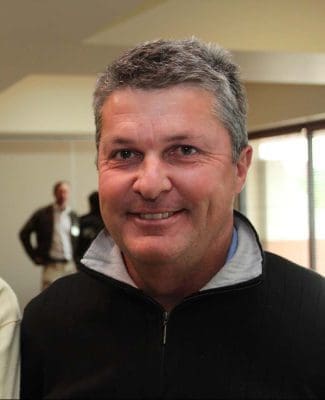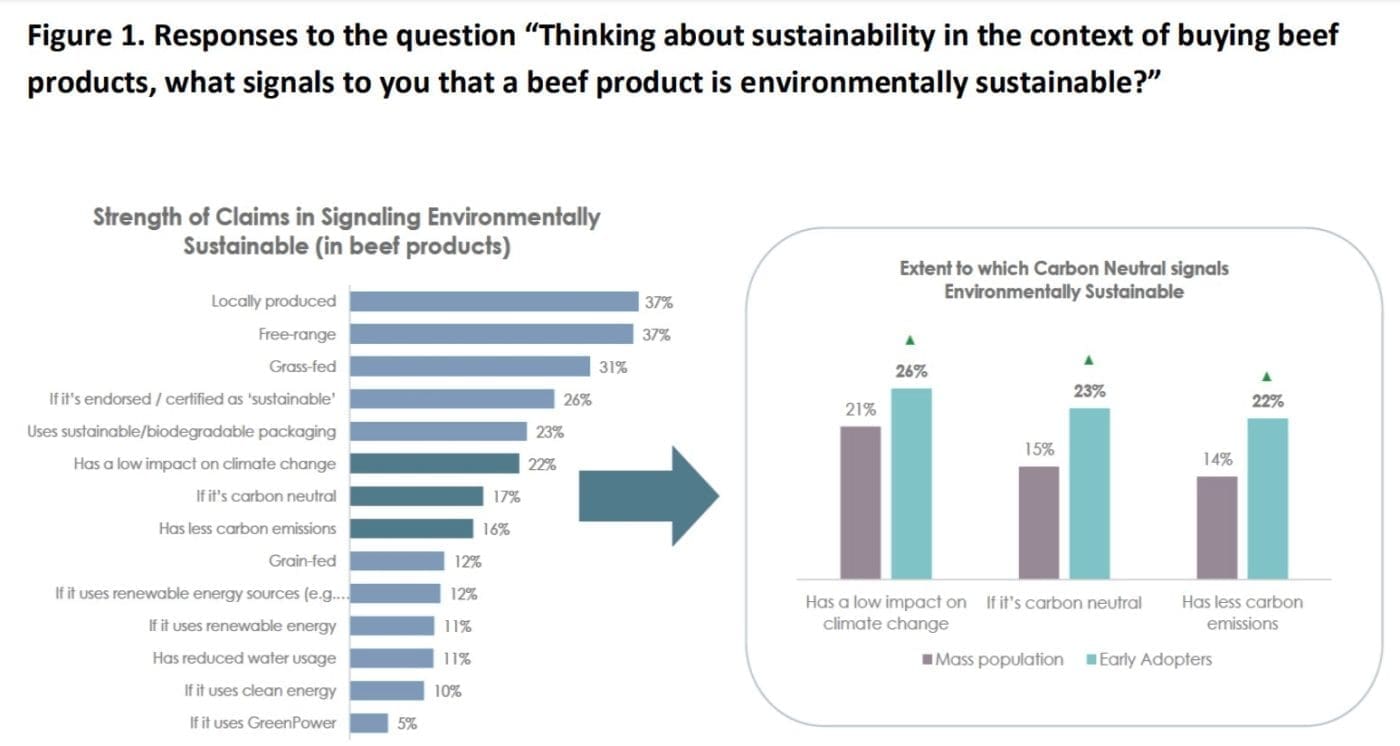IMPORTANT new research has been released to assist Australia’s beef industry improve its carbon footprint and find practical ways producers can stay ahead of consumer expectations while remaining internationally competitive.
The Carbon Footprint and Reduction Options 2025 report is the culmination of an 18-month research project led by Twiggy Forrest’s Harvest Road, Meat & Livestock Australia and the Western Australian Department of Primary Industries.
The report, compiled by consultants Integrity Ag and Environment, claims to be the first large-scale baselining and emissions reduction plan for a beef supply chain in Australia. It’s findings are set to benefit beef producers across the country, the authors suggest.
Harvest Road is one of Australia’s largest and most diverse agri-food businesses. The company’s beef division, which includes Harvey Beef, WA’s largest beef processor operating a processing facility near the town of Harvey. Its extensive supply chain includes pastoral breeding, backgrounding and finishing properties, feedlots and the Harvey Beef plant, all located in Western Australia.
The Carbon Footprint report provides an assessment of supply chain emission intensity, market review insights and net emission reduction plan to help guide the changes required to achieve the Harvest Road supply chain’s carbon neutral targets.
The study provided a clear view of the emissions profiles and emission reduction opportunities of Harvest Road’s large-scale supply chain, with relevance to the broader Australian beef industry – particularly relating to current market insights and the program of work required through research, extension and development to achieve current industry emissions goals.
What makes the report unique is the depth of the research into the carbon intensity and greenhouse gas emissions of all parts of the beef production process.
It is the first time at scale, emissions from every aspect of the production process have been examined – from feed intake and food sources to turnoff – to reveal what areas of production should be targeted with special measures to reduce emissions.
The report covers:
Beef herd management improvements, such as improved weaning and growth rates, reduced mortality, and expansion of grain feeding, expected to achieve ongoing, incremental improvements in the emissions intensity profile of the supply chain, in this case leading to a 5.3pc improvement to overall supply chain emissions intensity. Opportunities are greatest for the northern industry, where cattle performance is more constrained and the opportunities for improvement are greater, the report says. This will be necessary to reduce emissions, particularly if the industry is to expand throughput by drawing more cattle from the north of the state.
Methane-mitigating feed additives, which have the potential to deliver significant methane emission reductions at various points of the supply chain, such as during grain finishing. Feed additives were assumed to provide benefits within Harvest Road’s feeding facilities from 2024 and to grazing operations from 2027. Supply chain emissions mitigation from feed additives was forecast to improve incrementally throughout the decade, achieving a 9pc improvement in emissions intensity for the supply chain by 2030. Together with beef herd management, combined emission mitigations were forecast to be 14.3pc for the supply chain emissions intensity by 2030.
Considering the central role of methane and the challenges in substantially reducing methane in the supply chain to 2030, the report suggests there would be merit in further examining what is required to assess and potentially accredit so called ‘Climate Neutral’ supply chains, which may apply different metrics for assessing the impact of methane.
The study identified that carbon neutrality would require a significant amount of sequestration in soil and vegetation. Significant effort will need to be invested in establishing the practices and measurement approaches needed to achieve these outcomes and measure the impact across the supply chain, it said.
Specifically:
- Lower-cost measurement is a critical need for assessing soil carbon change. Current ERF soil carbon projects are very expensive, and costs are greatest when measuring small change over large areas such as in pastoral zones. This is a critical gap for the beef industry, the report said.
- Vegetation ERF methods are suited to large projects. In a supply chain context, many small projects are required to quantify vegetation carbon sequestration. Costs are anticipated to be a barrier to widespread adoption. Other systems with lower compliance costs are required that can reliably quantify vegetation carbon sequestration in small areas on large numbers of farms.
- New strategies are required to quantify vegetation sequestration in areas that currently don’t fit within the ERF methods. For example, sequestration occurring in forest that can’t be cleared for regulatory reasons can’t be included in the ERF, but there may be other mechanisms that can enable beef supply chains to quantify and claim the sequestration from these sources.
Market engagement:
The market study revealed that consumers have a general understanding of environmental sustainability, however understanding of carbon neutrality in relation to the beef industry is lower.
A strong market of environmentally-conscious ‘Early Adopters’ was identified, with a proportion of the public willing to pay a price premium for carbon neutral beef products. It was discovered that people care deeply about sustainability and are changing their behaviours to be more eco-conscious, however carbon neutrality is not currently well understood and has limited market presence. As a result, actions to deliver watertight and consistent communication and messaging to consumers and industry are required, including at brand level.
Supply chain engagement:
The project emphasised that the majority of emissions and the greatest opportunities to reduce emissions or sequester carbon arise at the farm level. However engagement with customers and consumers seeking better environmental credentials primarily happens amongst brand owners and retailers.
Improving and communicating environmental credentials required an integrated, whole-of-supply-chain approach with high engagement with producers through to consumers and Government, the report said.
To bring transformative change, two key needs had emerged:
- Firstly, systems will need to be implemented to enable transfer of information around the carbon credentials of livestock and beef throughout the supply chain. This needs to be done in a robust and auditable way, and cost sharing will be required across the supply chain.
- Secondly, cost minimisation and a mechanism to fund carbon neutrality is needed throughout the supply chain. Consumers and Government will be critical stakeholders to engage to build a suitable model to fund carbon neutral beef into the future.
The above findings highlight the need to develop an adoption program in the supply chain with a mid to long term view (at least to 2030) to address the many and complex needs that emerge in bringing transformational change across the whole supply chain.
These emission reduction activities can be applied to any beef or livestock enterprise to assist in reducing emissions across the red meat industry to achieve the industry’s goal of carbon neutrality by 2030.

Paul Slaughter
Harvest Road chief executive Paul Slaughter said the report would help lay the foundations for a more thorough understanding of the status and drivers behind carbon emissions in the beef supply chain.
“We know that climate change is a major threat to our industry’s future and it is only with practical and implementable solutions that we can meaningfully reduce our emissions as an industry. But that doesn’t mean we cannot be ambitious about our targets, and we will continue to support our partners to create sustainable businesses that actively prevent climate impact, enhance food security and revitalise local ecosystems,” Mr Slaughter said.
Harvest Road’s Sustainability Lead Dr Scott Strachan said the report provided credible, objective data which all stakeholders can use to benchmark and guide next steps towards improving their own carbon footprint.
“A lack of critical information has been our biggest barrier to moving forward as an industry and there is not enough information about the amount of carbon emissions from the beef supply chain and where the real opportunities to improve exist,” he said.

Ivan Rogers, Kylagh Feedlot, Tammin, WA
One of Harvest Road’s supply partners, beef producer Ivan Rogers welcomed the Carbon Footprint Report and said it gave both large and small producers a blueprint of how they can lower their own carbon emissions most effectively.
“What the industry needs is practical and implementable steps towards carbon neutrality and this study gives us direct information on emissions reductions opportunities across areas such as herd management, weaning and growth rates. It is a big step in building industry-wide understand of where our best strategies in emissions reductions can be found,” Mr Rogers said.
Consumer market research
Additionally, the Carbon Footprint Report conducted market research to better understand consumer attitudes and behaviours to carbon emissions and assist in the development of carbon neutral products.
The research showed that to future-proof business, brands needed to invest in more sustainable practices now to lead the pack and create a clear point of difference as it becomes the norm, with one in four consumers saying they would be willing to pay 15pc more for carbon neutral beef.
The findings come from the responses of 4000 Australian consumers surveyed with opinions showing the carbon footprint of the beef industry is an increasingly important factor for discerning global customers, with two in three consumers say that meat producers should be doing everything they can to be sustainable.
Stand by for a second report later this week based on the findings from the report’s consumer research.
The Carbon Footprint Report can be accessed here.




HAVE YOUR SAY